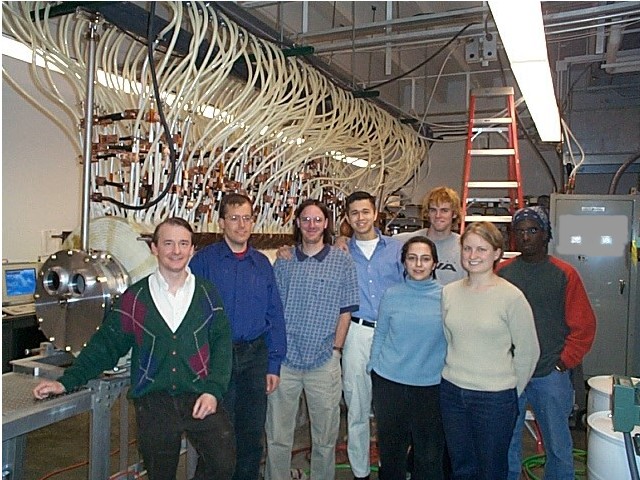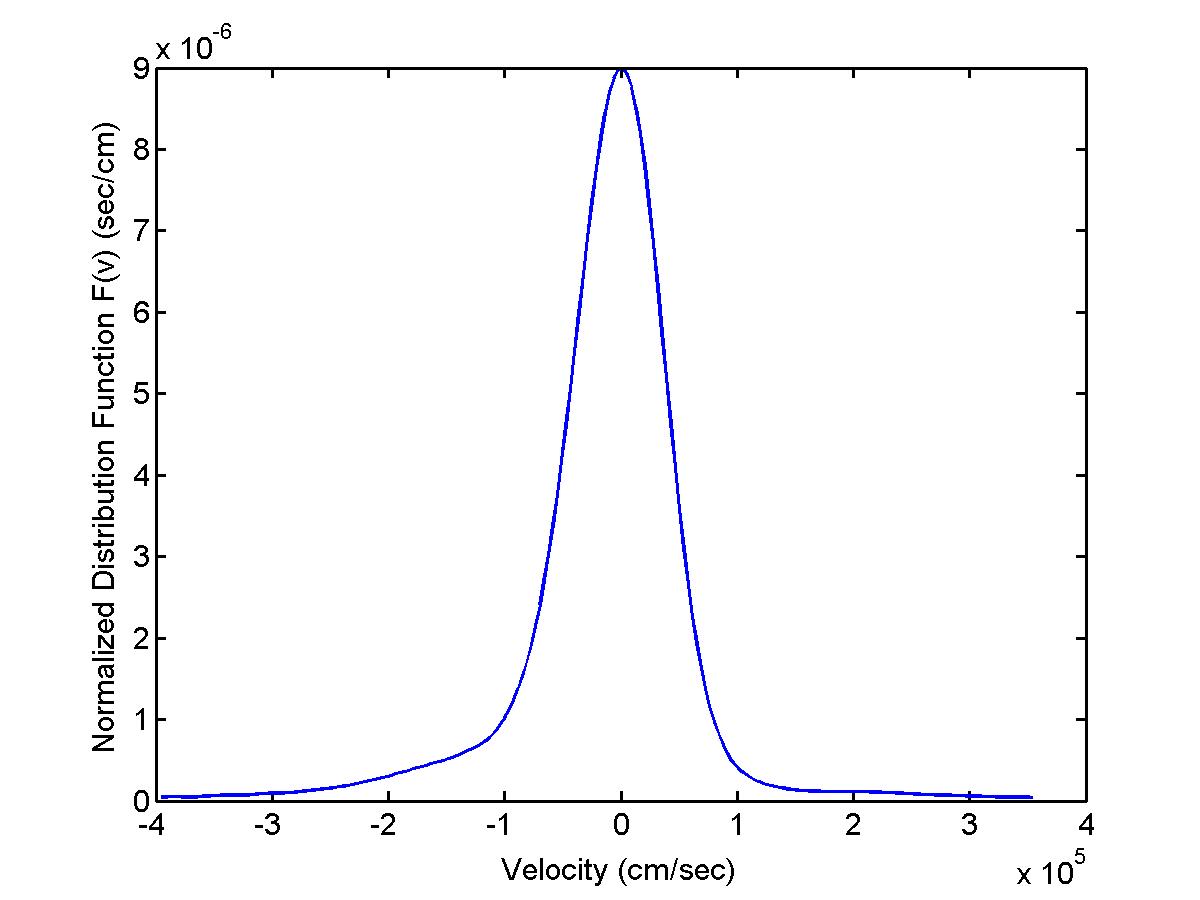
Experiments in fundamental plasma physics

From right to left: Ahmed Diallo (Graduate Student), Bjorg Larson (Undergraduate Student), Bret Lehmer (Undergraduate Student), Ilker Uzun (Graduate Student), Tom Cox (Undergraduate Student), Eric Errthum (Undergraduate Student), Herbert Gunell (Post-Doc), F. Skiff (Professor).
Experimental Studies of Plasma Waves and Fluctuations
Neutral plasmas are a very interesting and unusual "many-body" system. A plasma consists of a very large number of freely moving charged particles. They move freely because each particle subtly contributes to cancelling the electrical effects of all the other electrical charges. Paradoxically, this cancellation is so effective that all the particles move as if the other particles were not present. However, if you shake one particle you will affect many other particles: Understanding plasma dynamics is mostly a question of understanding plasma waves. We are studying the dynamics of electrostatic plasma waves of which there are many types.
Laser Aided Plasma Measurements
 Laser spectroscopy provides a way of probing the velocity distribtion of ions in a plasma. This is accomplished because the Doppler effect from ion motion strongly affects laser induced fluorescence. The velocity axis is scanned experimentally by scanning the laser frequency. |
Laser Induced fluorescece is used to measure the phase-space (position and velocity) resolved plasma dynamics. This dynamics consists mostly of waves which can be excited using various kinds of antenna. An example of a phase-space picture of a wave is given below in a short .mpg clip. This clip shows the "sloshing" of plasma ions in phase space during one complete period of wave motion at 40kHz where the position and velocity of ions along the magnetic field are the axis of the plot.